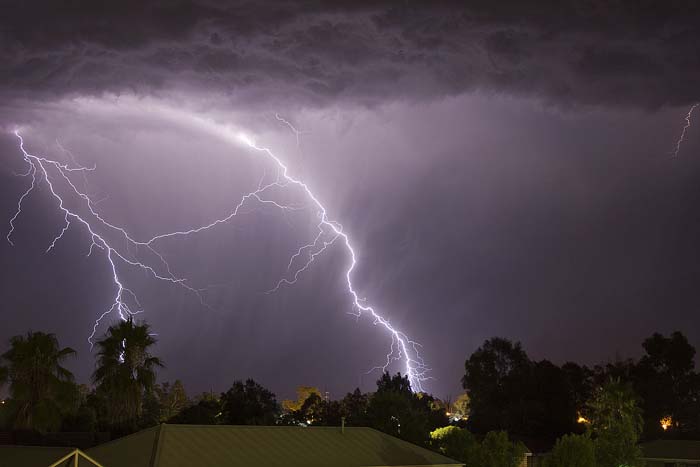
Synopsis: In this rainy season, do not be surprised by the weather conditions, and install a protection system in your home or workplace, which guarantees the safe electrical discharge that lightning produces on the roofs of buildings.
The atmospheric discharge – better known as lightning – is an electrical event of natural origin, generated by the accumulation of static electric charge. In the unloading process, two events of easy distinction are presented: lightning and thunder.

A lightning strike on the earth’s surface is accompanied by a rapid rise in voltage (voltage) and a strong dispersion of current, which can cause damage to people, animals, electrical operation equipment, and buildings. In the world, every year, millions of atmospheric discharges are registered. Therefore, it is necessary to know the probability of this natural event in our area, by means of the meteorological prediction, and the possible electrical power of dissipation, to reduce the risk or limit the damages.
The Ministry of Labor and Social Welfare is responsible for issuing safety guidelines in work centers. For the case of static electricity and protection against lightning strikes, the technical standard NOM-022-STPS-2015 was updated – Static electricity in work centers – Safety conditions, published in the Official Gazette of the Federation in April 2016.
The standards are reviewed periodically to be ratified, updated, or canceled. In this case, it was renewed to provide greater security to the personnel in the workplace. The updates arise mainly due to the greater experience acquired in its field of application and the development of new products or technologically and economically viable technological advances.
Changes in the norm
Some of the modifications compared with the previous version (2008) are the following:
Article 8, indicated “lightning rod “, is now called “protection system against atmospheric electrical discharges “, because this – as the name implies – integrates a complete system and not a single device. The designer of this protection system has more elements to carry out its work and provide the property and the people who inhabit it with better safety conditions against atmospheric discharges.
In the index, a new topic was added (Article 10): “Training and training “. Although it was contemplated in the previous version, this time emphasis is placed on its importance. Therefore, those responsible for the electrical safety of the work center should observe with greater care what is established in this section, which even provides relevant information on standards to be observed for the implementation of the protection system.
Now it includes the Mexican Standard, NMX-J-549-ANCE-2005- Systems of protection against electrical storms, which emphasizes the protection systems -both internal and external- for the property to be protected. In this way, the designer of this protection system has more tools to facilitate his work.
Within Article 6, Obligations of workers, the following was added: “notify the employer, any abnormal situation detected in the systems of grounding and protection system against atmospheric electrical discharges”. This should be taken with caution, as it can give the appearance of assigning responsibility to the worker on risky technical issues and that are exclusively for the use of experts and highly qualified personnel.
Added instructions for worker safety such as:
Install a grounding system arrangement and provide a high resistivity surface in the worker’s transit zone, such as shredded gravel at least 0.10 meters thick, between the natural terrain and the elements of the grounding system.
Provide a non-metallic channeling with weather resistance on the surface of the down conductor, in order to reduce the possibility of accidental or incidental contact.
Place in the pipeline warnings of caution that indicate the DANGER: EVENTUAL CURRENT OF RAYO, according to the arranged thing by the NOM-026-STPS-2008.
Workers who carry out activities in places where there is exposure to the incidence of lightning discharges, and are not protected against this risk, such as roofs of buildings that protrude in height with respect to other contiguous structures, poles or towers of lighting or wiring, elevated platforms, antennas, among others, should suspend activity as soon as an electrical storm approaches.
In Article 9, the characteristics that the instruments used to measure the earth resistance and the connections between different elements of the grounding system are specified in more detail.
Final recommendation
It is necessary that those responsible for electrical safety, in the work centers, be updated on the changes of the rules in their area of responsibility and apply what is established there. Although the previous norm is directed to work centers, it can be used as a reference for any other type of property such as housing and rural constructions.




